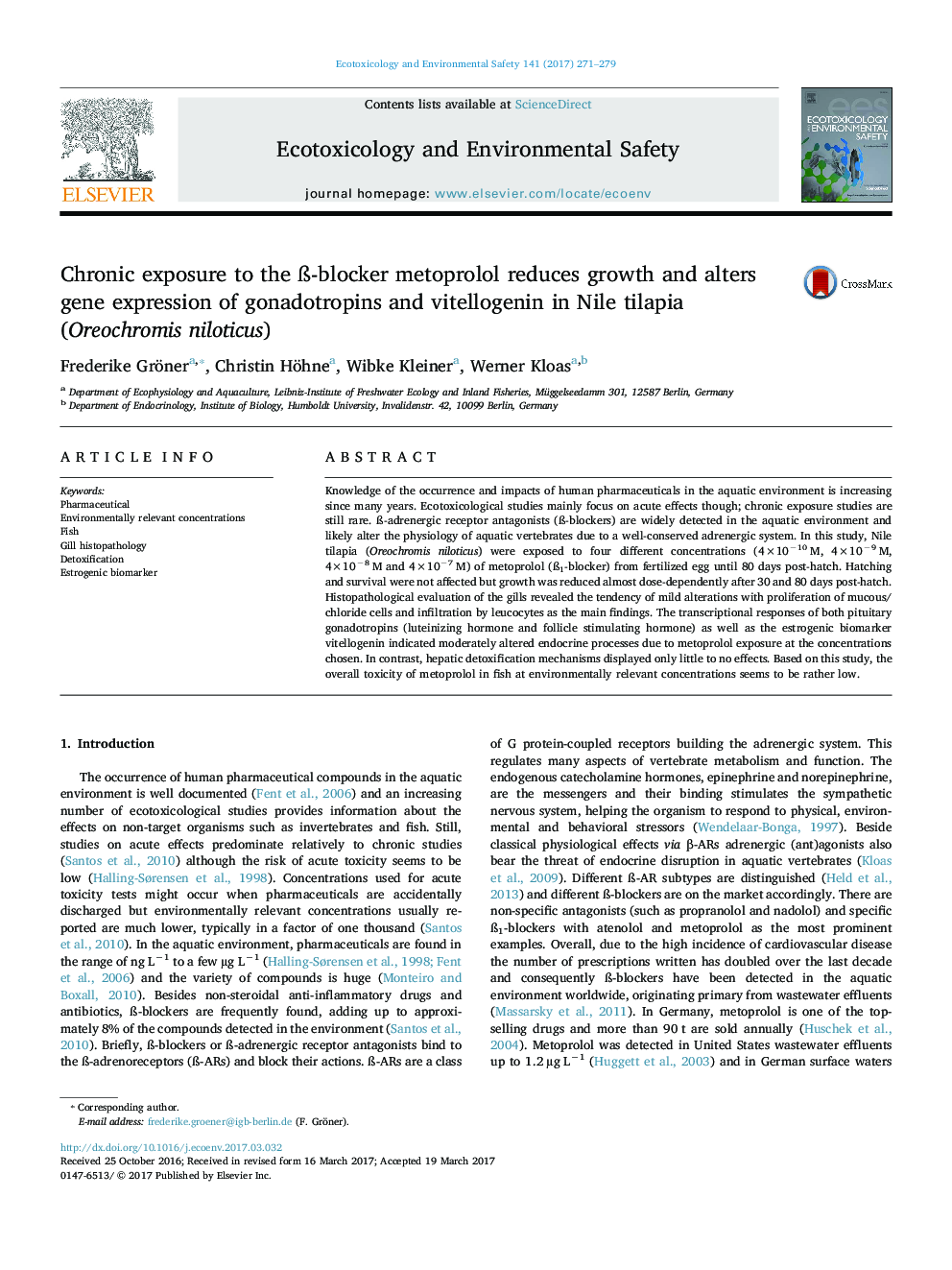| Article ID | Journal | Published Year | Pages | File Type |
|---|---|---|---|---|
| 5747908 | Ecotoxicology and Environmental Safety | 2017 | 9 Pages |
Abstract
Knowledge of the occurrence and impacts of human pharmaceuticals in the aquatic environment is increasing since many years. Ecotoxicological studies mainly focus on acute effects though; chronic exposure studies are still rare. Ã-adrenergic receptor antagonists (Ã-blockers) are widely detected in the aquatic environment and likely alter the physiology of aquatic vertebrates due to a well-conserved adrenergic system. In this study, Nile tilapia (Oreochromis niloticus) were exposed to four different concentrations (4Ã10â10Â M, 4Ã10â9Â M, 4Ã10â8Â M and 4Ã10â7Â M) of metoprolol (Ã1-blocker) from fertilized egg until 80 days post-hatch. Hatching and survival were not affected but growth was reduced almost dose-dependently after 30 and 80 days post-hatch. Histopathological evaluation of the gills revealed the tendency of mild alterations with proliferation of mucous/chloride cells and infiltration by leucocytes as the main findings. The transcriptional responses of both pituitary gonadotropins (luteinizing hormone and follicle stimulating hormone) as well as the estrogenic biomarker vitellogenin indicated moderately altered endocrine processes due to metoprolol exposure at the concentrations chosen. In contrast, hepatic detoxification mechanisms displayed only little to no effects. Based on this study, the overall toxicity of metoprolol in fish at environmentally relevant concentrations seems to be rather low.
Related Topics
Life Sciences
Environmental Science
Environmental Chemistry
Authors
Frederike Gröner, Christin Höhne, Wibke Kleiner, Werner Kloas,
